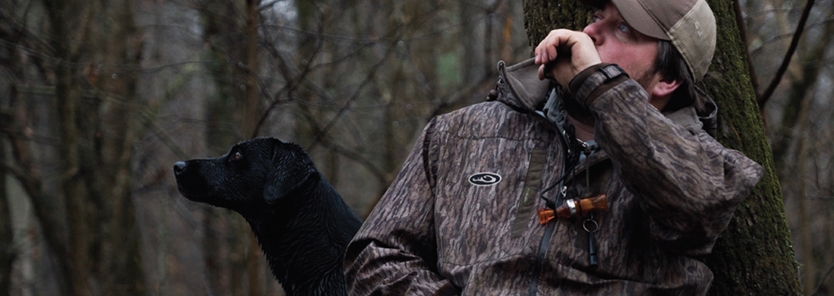How to Duck Call – Say The Right Thing
Calling ducks is one of the most rewarding parts of duck hunting, but for a lot of hunters it presents one of the biggest challenges; especially when it comes to knowing how to duck call and when to call. Successful duck callers also understand that they have to change up their calling technique based on where they are hunting. Despite the challenges, there is no more effective tool at a duck hunter’s disposal than knowing how and when to use the “instrument” hanging on your lanyard. I believe a duck hunter who learns how to adjust their calling to the specific environment they’re hunting will reap dividends in the form of consistent limits!
Let’s start with some philosophy about duck hunting. Duck hunting is governed by the same 3 laws that govern real estate… LOCATION, LOCATION, LOCATION. There are places where a duck is willing to go and there are places they would never go. These are largely deter-mined by the available food, habitat, and on a larger scale, the migratory route the ducks are traveling.
Among all the places where a duck is willing to go, there will be an “extra special” piece of real estate that will be a duck’s favorite location each day. Some hunters refer to this as the “X,” or you could call it “the sweet spot.” When you are set up correctly and are hunting “on the X”…it’s easy! The ducks want to be there. However, when you aren’t on the “X” you have to work harder.
For most waterfowl hunters, finding and hunting on the “X” every day isn’t feasible. Good duck “callers,” how-ever, can learn to tempt ducks to a place where they really aren’t opposed to going, but left on their own, they probably wouldn’t have. This is important to note – because for most hunters their lease may be a place with great habitat that a duck might like, and there may be ducks in the general vicinity, but more times than not, they aren’t located “on the X.” This is where and when someone good at calling will shine and can play a big role in the number of ducks you bring home in your game tote.
With a little “duck hunting philosophy” out of the way, let’s look at crafting the style of calling to match your location. I like to let the location dictate how I should call. If you observe loud, vocal ducks that are aggressively feeding where you’re hunting, you can call loud and aggressive. Likewise, if you observe quiet ducks that are resting where you’re hunting, be more subtle with your calling.
Proper scouting before the hunt will tell you a lot about the ducks you are hunting, and will tell me how I need to call. If possible, I always try to scout the area I am going to hunt beforehand and I try to copy what I have observed in my scouting. If I am hunting an area that I have not been able to scout beforehand, I try to make my calling reflect the behavior I have observed in other similar locations in the past.
Here are a few observations about how to duck call:
Calling ducks in thick canopy flooded green timber
Many times large rafts of ducks “in the woods” are loud and active. Lots of water movement, lots of quacks, and aggressive feed chatters. I try to figure out the lines that the ducks are flying between food source and loafing spots and I hunt under those flight lines. Most duck hunters refer to this as “running traffic”. In this scenario I try to call as loud and as aggressively as possible.
Use aggressive calling in order to get their attention with lots of splashing and water movement, and lots of quacks. In this scenario ducks are very vulnerable to great calling because they are listening more than they are using their sight and seeing your decoys, so calling is at a premium and “they need to hear you.”
Calling ducks in open water lakes/marshes
In this scenario I use my loudest duck call to get the attention of high flying ducks that are far off. Typically I want to pair that with a big spread of decoys and water movement, so that as the ducks get closer I can back off the calling. In this scenario the ducks will be more driven by what they can see than by what they can hear.
Calling loafing/resting ducks on small water
When hunting a loafing spot, like a sand bar in a river, or a small water hole scouting is critical because you want to be as close to the “X” as possible. I like to use a large spread of decoys in this scenario because I’m giving the ducks something to look at, and since I won’t be calling as much. In this setting I use my duck call sparingly to coax them on the corners and finish them in the center of the spread.
Spencer Halford is the owner of “Rolling Thunder Game Calls.” He is the “2014 World Cutdown Champion” and has been manufacturing waterfowl and turkey calls since 2010.
~
For more from GameKeeper Farming For Wildlife, join our weekly newsletter or subscribe to GameKeepers Magazine. Your source for information, equipment, know-how, deals and discounts to help you get the most from every hard-earned moment in the field.









